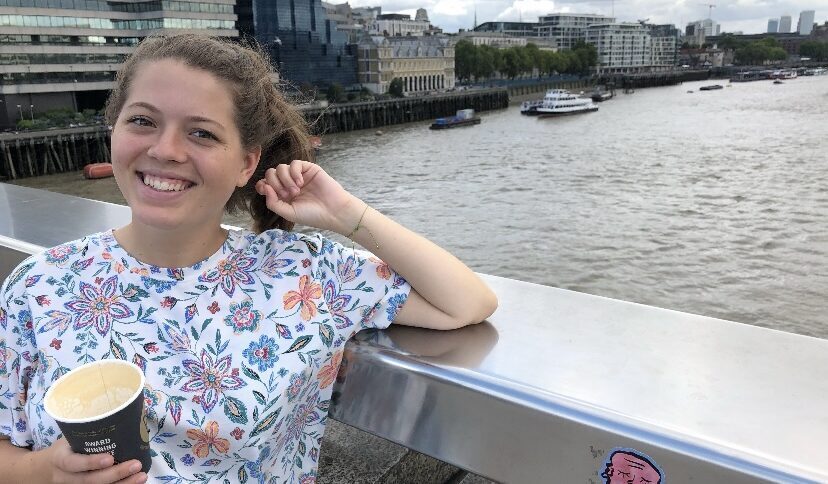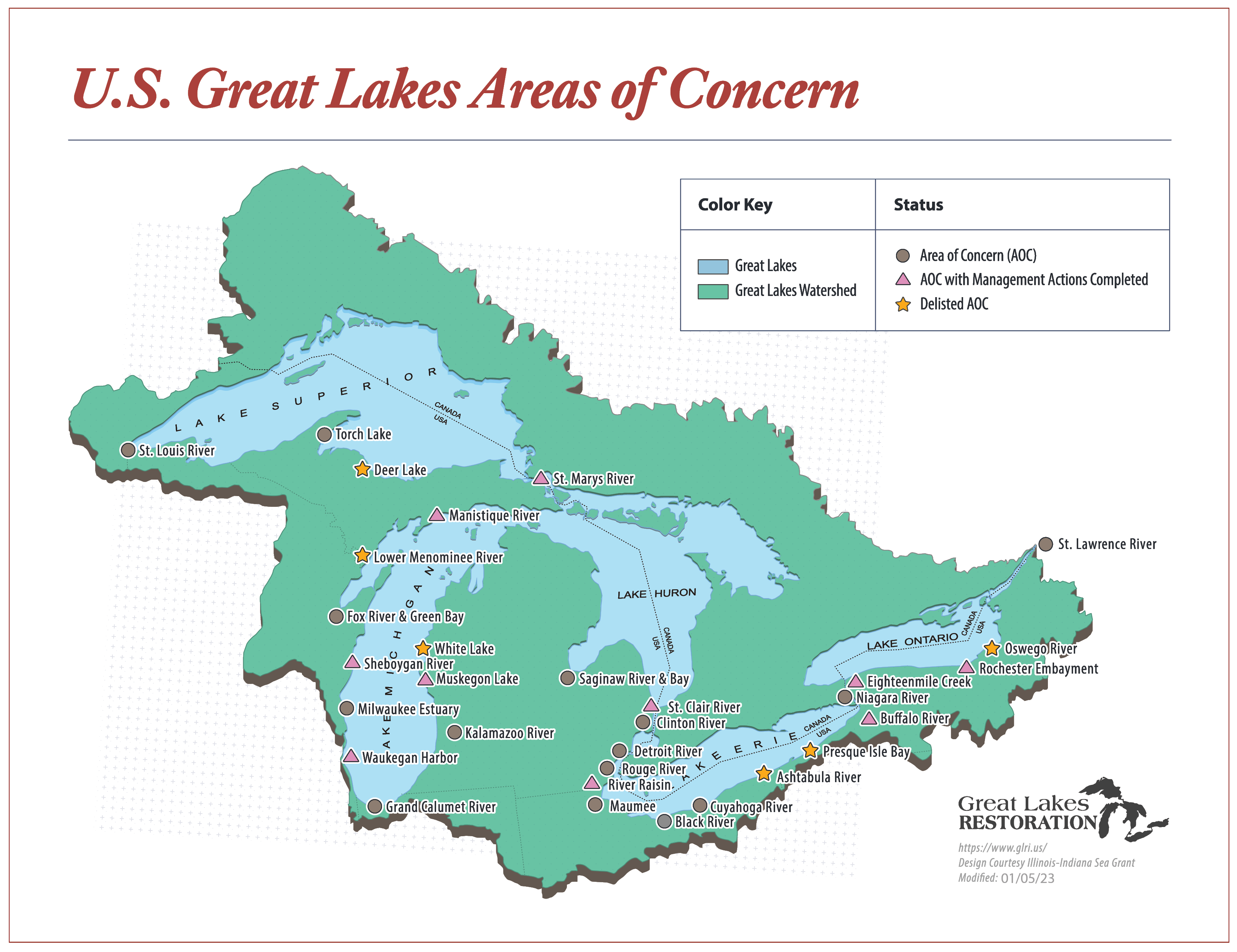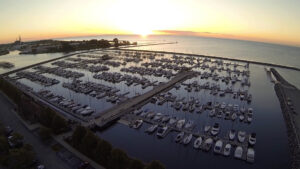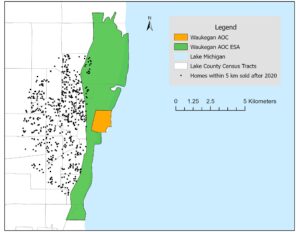
Meet Our Grad Student Scholars is a series from Illinois-Indiana Sea Grant (IISG) celebrating the graduate students doing research funded by the IISG scholars program. To learn more about our faculty and graduate student funding opportunities, visit our Fellowships & Scholarships page. Emma Donnelly is a master’s student in the School of Environmental Sustainability at Loyola University Chicago. Her thesis research is focused on residential mobility and the value of water quality restoration in Great Lakes Areas of Concern.
For decades, legacy pollutants from historical industrial activities have created health concerns for residents in the Great Lakes region. High costs are often a burden in the cleanup process and become a continuous obstacle in tackling water quality issues that affect residents and wildlife. Loyola student Emma Donnelly is conducting research that provides promising insights into the economic benefits of investing in remediation of heavily polluted locations around the Great Lakes. Cleaner water and healthier ecosystems have the potential to expand opportunities for development and recreation, while enhancing local economies and wildlife habitats.

Location and status of the U.S. Great Lakes Areas of Concern. Updated January 5, 2023.
Legacy pollutants, well-known industrial substances, including polychlorinated biphenyls (PCBs) and polycyclic aromatic hydrocarbons (PAHs), not only create health concerns for communities but also threaten the wellbeing of wildlife and limit recreational activities and development of coastal areas. In 1987, the United States and Canada established the Great Lakes Water Quality Agreement in an effort to address concerns about legacy pollutants in the region. This agreement established Great Lakes Areas of Concern (AOCs) to be prioritized for cleanup. Between 1985 and 2019, the United States and Canada spent $22.78 billion restoring AOCs. This has prompted people to ask questions such as: Do the benefits of cleanup outweigh the costs? Might additional cleanup be worth it? Answering questions like these is essential to evaluating the cost-effectiveness of the AOC program.

Waukegan Harbor. Image source: https://www.visitlakecounty.org/WaukeganHarborandMarina.
Waukegan Harbor in northeastern Illinois is one of the 43 AOCs designated through the Great Lakes Water Quality Agreement. Legacy pollutants were first discovered in the harbor in 1975. Since its listing as a Superfund site in 1981 and designation as an AOC in 1987, the Waukegan Harbor AOC has undergone significant remediation. It currently holds the status of “Management Actions Complete,” meaning that all cleanup projects have finished and the AOC is being monitored for delisting.
Over $73 million has been invested in contaminated sediment remediation in Waukegan Harbor. Measuring the economic effects of restoration is essential to understanding the consequences of remediation. In many AOCs, there is a stigma associated with contamination of the water, so remediation of the harbor could contribute to new economic activity in downtown Waukegan. The harbor provides a space for employment at industrial facilities as well as recreational opportunities at public parks and beaches on Lake Michigan, and access to these uses—resulting in economic benefits to the city—can be improved through cleanup.
The goal of Emma Donnelly’s research is to estimate the economic value of restoring the Waukegan Harbor AOC. Her methodology uses an analysis of house sales in Waukegan before and after several milestones of cleanup progress. The analysis relates home prices to property characteristics, including proximity to the boundaries of the AOC. Specifically, in her study, Donnelly examines the effect of the removal of Beneficial Use Impairments (BUIs) on home values. BUIs are water uses that have been restricted because of pollution (e.g., restrictions on recreation and consumption of fish). An AOC is delisted once all of its BUIs have been removed. In the Waukegan Harbor AOC, five BUIs were removed between 2011 and 2020. Only one BUI has yet to be removed—restrictions on fish and wildlife consumption—although it is expected to happen by 2026.

Map of the Waukegan Harbor Area of Concern (AOC) and Extended Study Area (ESA), plus locations of nearby homes that have been sold since 2020.
Donnelly’s analysis provides evidence that local residents value the cleanup of the Waukegan Harbor. The results of the hedonic analysis of Waukegan Harbor indicate that home prices increased by $12,832 per household, or $169 million in aggregate for all households within five kilometers of the AOC.
Donnelly also finds the benefits of the cleanup only emerged after the fifth BUI was removed, suggesting that substantial cleanup may be required before benefits capitalize into housing prices. Her results indicate that the benefits are concentrated in homes approximately 1 to 3 kilometers from the harbor, and that benefits decrease with distance from the harbor. This is consistent with prior research that suggests that the benefits of cleanup diminish for homes that are far from the site of cleanup. She believes one reason why she does not find benefits for homes within one kilometer could be because of the nearby industrial area, highway and railroad surrounding the harbor, which separates homes from the immediate vicinity of the AOC; in fact, there are very few homes located within one kilometer of the harbor. Also, other location characteristics that are part of the industrial setting could have lessened the effect of the cleanup on home prices. Overall, Emma’s findings may suggest that for industrial areas with degraded water quality, where households are not located immediately adjacent to the water, substantial progress toward full restoration may be required before benefits start to capitalize in home values.
Waukegan Harbor Remedial Action Plan. Final Stage III Report – Waukegan Harbor RAP – July 1999
Illinois-Indiana Sea Grant is a partnership between NOAA, University of Illinois Extension, and Purdue University Forestry and Natural Resources, bringing science together with communities for solutions that work. Sea Grant is a network of 34 science, education and outreach programs located in every coastal and Great Lakes state, Lake Champlain, Puerto Rico and Guam.
Contact: Carolyn Foley

